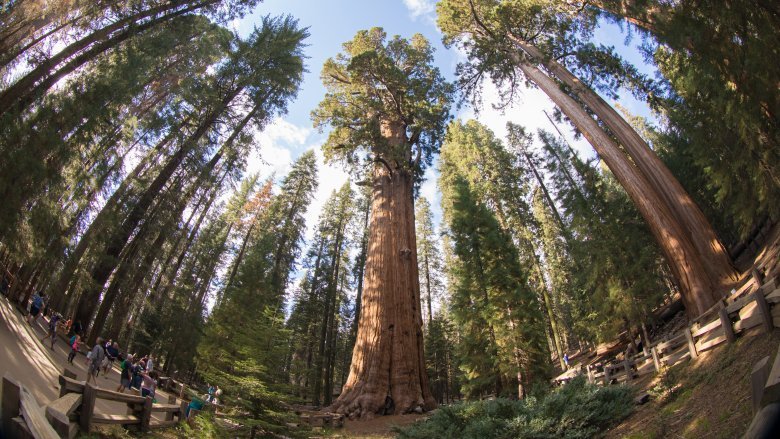В очень зачаточном виде командная работа является основой цивилизации . Люди, объединяющиеся для взаимной выгоды, — вот что позволило нам выйти за рамки простых собирателей в дикой природе и развить города, экономику, сельское хозяйство, религию и даже язык. Это сработало очень хорошо для нас как вида. А иногда это работает даже за пределами нашего вида.
10. Косатки, на которых охотятся люди
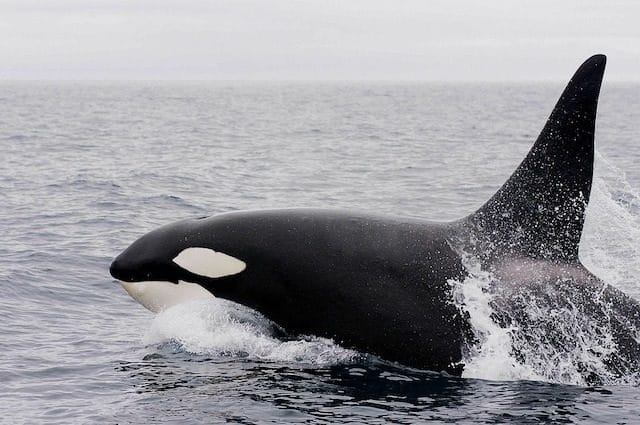
Было высказано предположение, что собаки были первоначально одомашнены нашими предками охотниками-собирателями, чтобы помогать им в охоте. Это всего лишь теория, но она определенно хороша, если учесть, что это больше, чем просто собаки, на которых мы полагались, чтобы помочь нам охотиться на протяжении многих лет. Например, группа охотников в Новом Южном Уэльсе, Австралия, однажды объединилась с косатками для охоты в открытом море.
Известно, что между 1840 и 1930 годами китобои из города Эдема работали с косатками, чтобы ловить усатых китов. Люди-китобои охотились за усами, но и косатки ценили их как источник пищи. Какое-то время косатки были просто надоедливым китом на пути, пока люди не заметили что-то необычное. Стая косаток начала подгонять усатых китов к охотникам.
Стаю возглавлял крупный косатка, которую охотники назвали Старый Том. Он стал приближаться к китобойным судам ибить хвостом по поверхности. Люди вовремя поняли, что им нужно следовать за китом туда, где другие косатки загнали усатого уса в угол. Китобои убьют его, и стая будет лакомиться мясом, оставив жир и кости людям, чего они и хотели.
9. Угри и групер охотятся вместе

Рыб часто называют одними из наименее умных животных в мире. Люди сравнивают себя с золотыми рыбками, когда, например, забывают что-то и теряют след своих мыслей. Но море может вас удивить, и под волнами происходит многое.
Исследователи обнаружили, что и угри, и морской окунь будут охотиться вместе к обоюдной выгоде, что указывает на то, что это не просто случайные встречи . Окунь обычно охотится в открытых водах днем, а угри охотятся на рифах ночью. Это означает, что добыча морского окуня может избежать его, спрятавшись в рифах, а добыча угрей может избежать их, придерживаясь открытой воды. Вы можете видеть, как партнерство может принести пользу каждому члену.
Чтобы это сработало, морской окунь будет активно приближаться к мурене и трясти головой, пока не привлечет внимание угря. Затем угорь присоединяется к морскому окуню, охотясь на рифе и вокруг него, а иногда морской окунь даже приводит угря к спрятавшейся рыбе. Судя по наблюдениям, обе рыбы в конечном итоге более успешны в охоте, чем в одиночку.
8. Люди и дельфины рыбачат вместе
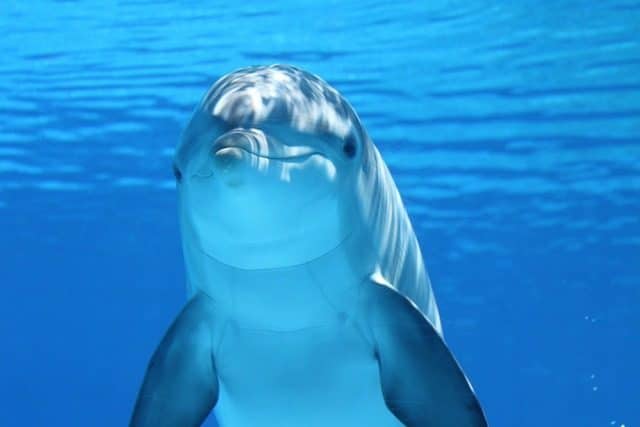
Мы видели, что киты могут помогать людям охотиться на других китов, но они не единственные водные млекопитающие, которые извлекли выгоду из объединения с людьми. Дельфины также использовали нас, и оба вида объединились у берегов Бразилии.
В этом случае дельфины служат для человека глазами при охоте на кефаль . Рыбаки не видят косяков кефалей в воде, но у них наготове сети. Дельфины преследуют кефаль, ведя ее к людям. В нужный момент дельфины будут кататься по поверхности воды, сигнализируя людям забросить сети.
Большая часть кефалей будет поймана сетями, а те, которым удалось убежать, нарушат свой строй, позволяя дельфинам схватить их и получить свою долю.
7. Кенийские медоуказатели работают с людьми, чтобы найти ульи
Не только в море человечество получает пользу от полезных животных. В воздухе кенийский медоуказчик — лучший друг сладкоежки. А еще это одно из немногих диких животных, которые активно общаются с людьми, которым помогают. На самом деле, люди могут общаться прямо в ответ. Это странно, но также хорошо задокументировано.
Птицы-медоуказатели делают то, что следует из их названия. Они приведут людей, часто без особой подсказки, к скрытым пчелиным гнездам, полным меда. Народ яо в Мозамбике может вызвать диких птиц простым звуком, и они откликнутся. Они проложат путь к меду и будут ждать своих партнеров-людей. Оказавшись там, люди разобьют улей и заберут мед. Они оставляют после себя пчелиную личинку и воск, которые птица может съесть.
Отношения между человеком и птицей были задокументированы еще в 1588 году, но в течение многих лет исследователи, не тратившие времени на их изучение, считали это преувеличением или откровенной ложью.
6. Лангурские обезьяны и читальский олень высматривают тигров
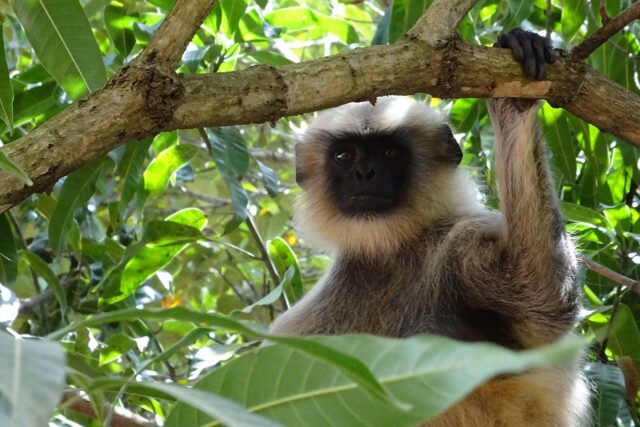
Если вы живете в мире, где тигры регулярно прячутся и, возможно, пытаются съесть вас и ваших друзей, у вас может возникнуть соблазн завести друзей, чтобы избежать их. Кажется, это то, что делают лангуры и олени-читалы в Индии.
И олени, и обезьяны служат быстрой едой для хищников, таких как тигры, и у обоих есть эффективные способы обнаружения хищников самостоятельно, но у них есть некоторые недостатки в охвате. На деревьях обезьяны лучше видят приближающихся хищников, чего олени не могут делать на земле. Они могут послать сигнал, чтобы предупредить не только других лангуров, но и оленей, когда что-то появится.
Обезьяны не могут все время находиться на верхушках деревьев, а на земле, собирая пищу или путешествуя, они плохо видят, так что же им делать? Здесь олени помогают. На земле превосходное обоняние оленей предупреждает их о присутствии приближающихся хищников. Затем они могут предупредить обезьян, чтобы они возвращались к деревьям, пока они спасаются бегством. Это ситуация «я почешу тебе спину, ты почешешь мою», которая помогает поддерживать их жизнь лучше, чем любой вид мог бы справиться в одиночку.
Обезьяны не могут все время находиться на верхушках деревьев, а на земле, собирая пищу или путешествуя, они плохо видят, так что же им делать? Здесь олени помогают. На земле превосходное обоняние оленей предупреждает их о присутствии приближающихся хищников. Затем они могут предупредить обезьян, чтобы они возвращались к деревьям, пока они спасаются бегством. Это ситуация «я почешу тебе спину, ты почешешь мою», которая помогает поддерживать их жизнь лучше, чем любой вид мог бы справиться в одиночку.
Обезьяны не могут все время находиться на верхушках деревьев, а на земле, собирая пищу или путешествуя, они плохо видят, так что же им делать? Здесь олени помогают. На земле превосходное обоняние оленей предупреждает их о присутствии приближающихся хищников. Затем они могут предупредить обезьян, чтобы они возвращались к деревьям, пока они спасаются бегством. Это ситуация «я почешу тебе спину, ты почешешь мою», которая помогает поддерживать их жизнь лучше, чем любой вид мог бы справиться в одиночку.
5. Рыба-усач чистит бегемотов под водой
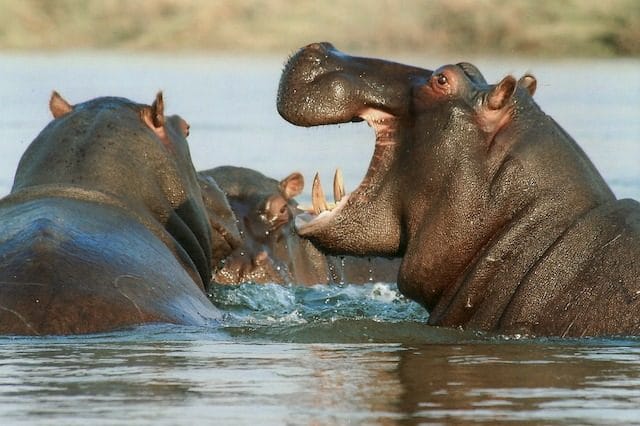
Известно, что бегемоты являются одними из самых агрессивных животных в Африке, убивая более 500 человек в год . Они очень территориальны, и, учитывая их размер, мало кто осмелится встать у них на пути. Тем не менее, рыба-усач не мешает бегемоту, но помогает бегемоту.
Как и все, бегемот склонен к сухости кожи. Они также могут получить насекомых и паразитов, заражающих различные складки и ямки на коже. У них сформировались мутуалистические отношения с рыбой-усачом в реках, в которых оба вида получают выгоду. У усачей есть маленькие, похожие на присоски рты, которыми они царапают все тело бегемота . Это позволяет им счистить всю омертвевшую кожу и паразитов и съесть их. Бегемот получает полную чистку тела, и все выигрывают. Рыба даже вычищает рот гиппопотама . Один бегемот иногда может быть покрыт десятками рыб, выполняющих свою работу.
4. Крабы-носители переносят морских ежей
Морские ежи мало чем занимаются в повседневной жизни. Они похожи на водных дикобразов и способны передвигаться, несмотря на то, что их маленькие ножки трудно разглядеть. Они также могут двигаться на своих шипах, если это необходимо. У них нет глаз, но у них есть рты, и именно поэтому, наряду с их шипами, они так хорошо уживаются с крабами-носителями .
Крабы используют две ноги, чтобы нести предметы на спине. Эти ноги были приспособлены специально для этой задачи, что позволяет им хорошо хвататься за довольно большие предметы, которые они балансируют на задней части своих панцирей. В данном случае они несут морского ежа. Многочисленные ядовитые шипы ежа служат защитой от хищников для краба, когда он путешествует по морскому дну. В то же время, когда краб находит пищу, еж может съесть объедки, оставленные крабом. Он также получит новые места для кормления, когда краб, наконец, отпустит его, что принесет пользу обоим существам.
3. Мотылькам юкки нужны растения юкки и наоборот
Есть несколько примеров совместной работы, столь же глубоких, как отношения между мотыльками юкки и растениями юкки. Тот факт, что любая из этих форм жизни все еще жива, на самом деле довольно примечателен, когда вы узнаете, в какой степени они делают друг для друга.
Юкка, как и любое другое растение, нуждается в опылении, чтобы размножаться. Насекомые являются одними из самых распространенных опылителей в природе, и всем нам известен пример таких вещей, как пчелы, которые переходят от растения к растению и распространяют вокруг пыльцу. А вот с юккой все немного сложнее, так как у них есть только один опылитель – бабочка юкка.
После размножения жизнь самца юкки заканчивается. Самка направляется к растению юкки и снимает пыльцу, а затем переносит ее на другое растение юкки, где она откладывает и пыльцу, и свои яйца . Растение теперь удобрено и дает семена и плоды. Гусеница бабочки съест их, когда вылупится. Из-за весьма специфического характера их взаимоотношений ни растение, ни мотылек не могли выжить друг без друга.
2. Муравьи-листорезы выращивают грибок
Муравьи-листорезы живут в южном климате, и вы, вероятно, видели их в видеороликах, когда они устраивают впечатляющее шоу. Целые армии из них будут путешествовать по лесной подстилке, неся в жвалах большие куски листьев. На первый взгляд может показаться, что муравьи едят листья, которые они несут, но это не так. Вместо этого листья — это скорее подарок за партнерство с грибком, который растет в их собственных гнездах.
Гнездо муравья-листореза может содержать тысячи камер и покрывать огромный участок земли. Они приносят эти листья домой, чтобы удобрить свои крошечные фермерские участки. Листья используются для выращивания грибов, которыми питаются личинки муравьев .
Муравьи настолько хороши в выращивании этого грибка, что убирают гнилой материал и мусор, а также защищают их от хищников или вредителей.
1. Ленивцы, мотыльки и водоросли работают вместе

Когда дело доходит до сложных отношений между живыми организмами, ничто не может сравниться с нашим другом ленивцем. Они могут не двигаться быстро, но им это и не нужно, потому что ленивцы являются частью трехстороннего партнерства с мотыльками и водорослями, которое приносит пользу всем.
Возможно, вы видели зеленый оттенок меха некоторых ленивцев. Это водоросли, растущие в трещинах их меха. Их густой мех также является домом для целой экосистемы насекомых, таких как тараканы и мотыльки. Вместе эти две вещи, водоросли и жуки, обеспечивают ленивцу замечательную природную маскировку . Свисающие с ветки дерева в джунглях, они были бы почти невидимы для многих хищников.
Помимо покрытия, ленивцы на самом деле едят водоросли , которые растут на их телах. А если вы знаете ленивцев, то знаете, что они спускаются на землю, чтобы заняться своими делами. Но почему? С таким же успехом они могли какать с деревьев. Но спуск на землю позволяет ленивцам вступать в контакт с местами, где мотыльки откладывают яйца в экскрементах ленивца и вокруг него. Это позволяет новым мотылькам поселиться в их меху. При этом мотыльки повышают уровень азота в мехе, что способствует большему росту водорослей. Таким образом, мы вернулись к тому, с чего начали, с ленивцев, поедающих водоросли.
📚 Не пропустите интересную информацию:
-
В каких областях используется искусственный интеллект? Примеры применения из разных секторов
Приложения на основе искусственного интеллекта привносят революционные изменения во многие сферы современного мира. Искусственный интеллект, который используется в самых разных областях: от электронной коммерции до... -
Характеристика кино шведского режиссера Рубена Эстлунда и 7 примеров фильмов
Рубен Эстлунд — шведский писатель и режиссер, получивший международное признание за свои провокационные и заставляющие задуматься фильмы. Шведский режиссер, который не стесняется быть «жестким» со... -
10 примеров высокой статистики смертности от обычных вещей
Говорят, что в жизни гарантированы только две вещи: смерть и налоги. И вы, по крайней мере, можете некоторое время совершать налоговые махинации, если попытаетесь. Но... -
13 самых компетентных примеров минималистского кино, которые выделяются своей простотой и реалистичностью
Прежде чем перейти к нашему списку, давайте поищем ответ на вопрос, что такое минималистское кино. В турецком словаре слово «минимализм» означает «упрощать», а в художественной... -
12 поразительных фактов о совах: Тайны ночных хищников
Птицы — одни из самых любимых созданий многих людей. Многие виды этих существ, часто ассоциирующиеся со свободой и миром, живут бок о бок с людьми...




